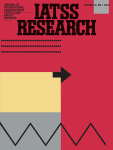
As driving error is a main contributory factor of road accidents, its causes and consequences are of great interest in the road safetydecision making process. This paper investigates several factors (including driver distraction, driver characteristics and road environment) that affect overall driving error behaviour and estimates a new unobserved variable which underlines driving errors. This estimation is performed with data obtained from a driving simulation experiment in which 95 participants covering all ages were asked to drive under different types of distraction (no distraction, conversation with passenger, cell phone use) in rural and urban road environment, as well as in both low and high traffic conditions. Driving error was then modeled as a latent variable based on several individual driving simulator parameters. Subsequently, the impact of several risk factors such as distraction, driver characteristics as well as road environment on driving error were estimated directly. The results of this complex model reveal that the impact of driver characteristics and area type are the only statistically significant factors affecting the probability of driving errors. Interestingly, neither conversing with a passenger nor talking on the cell phone have a statistically significant impact on driving error behaviour which highlights the importance of the present analysis and more specifically the development of a measure that represents overall driving error behaviour instead of individual driving errors variables.
| ID | pj154 |
| Manuscript | |
| DOI | |
| Tags | driver behaviour, statistical modelling |







